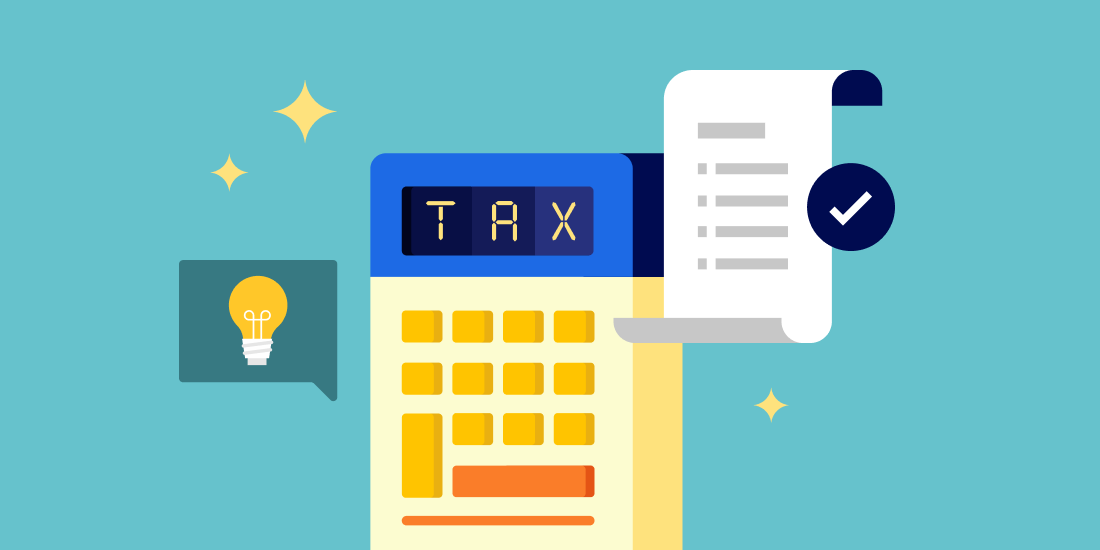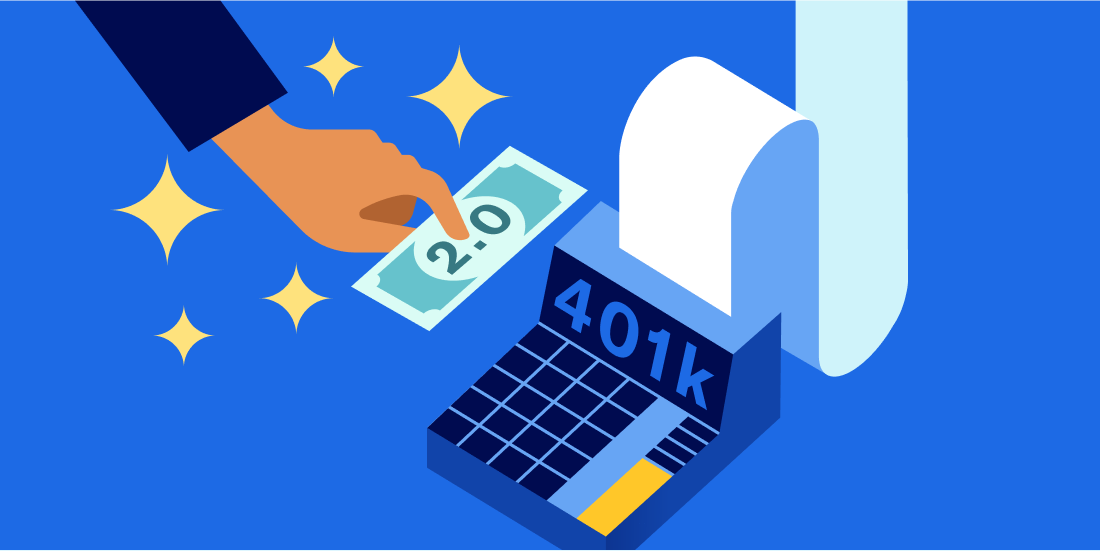Taxes

Featured articles
-
![]()
The Tax Benefits of Offering a 401(k)
Seize the tax deductions (and credits!). Offering a 401(k) to your employees can unlock ...
The Tax Benefits of Offering a 401(k) Seize the tax deductions (and credits!). Offering a 401(k) to your employees can unlock several tax benefits for your company. When employees contribute to their 401(k) accounts, they unlock some pretty sweet tax perks. But no less important are the potential tax benefits awaiting your own company by virtue of offering a 401(k) in the first place. We’re not a tax advisor, and none of this information should be considered tax advice for your company’s specific situation, but we’d be remiss if we didn’t lay out three key tax benefits that generally await companies that choose to sponsor a 401(k) plan: Company contributions are tax deductible Plan administration fees are (usually) tax deductible Small businesses can snag tax credits for starting a new plan and/or adding auto-enroll Keep reading for more details on each opportunity. Your company’s contributions to employees’ 401(k)s are tax deductible When you contribute to your employees’ 401(k)s, you not only supercharge their retirement savings and boost the appeal of your benefits, you can deduct your contributions from your company’s taxable income, assuming they don’t exceed the IRS’s limit. That annual contribution limit is 25% of compensation paid to eligible employees and doesn’t change from year to year. Compensation Pro-Tip: Consider a contribution over a raise It’s for this reason that dollar-for-dollar, contributing to your employees’ 401(k)s on a pre-tax basis (i.e. via a Traditional 401(k)) is more tax efficient for you and for them compared to giving them raises of an equivalent amount. Consider this example using $3,000: A $3,000 increase in employees’ base pay would mean a net increase to them of just $2,250, assuming 25% in income taxes and FICA combined. For the company, that increase would cost $2,422.12 after FICA adjusted for a 25% income tax rate. You contributing $3,000 to an employee’s 401(k), on the other hand, results in no FICA for both you and them. The employee receives the full benefit of that $3,000 today on a pre-tax basis, plus it has the opportunity to grow tax-free in a Traditional 401(k) until retirement. As the employer, the value of your tax deduction on that $3,000 contribution would be $750, meaning your cost is just $2,250—or 7% less than if you had provided a $3,000 salary increase. Your plan administration fees are (usually) tax deductible Although companies have the option of passing on their plan administration fees to employees—or splitting the tab—many employers opt to pay them entirely. In this case, these costs are typically considered a tax-deductible business expense. The result is a win-win: employees keep more funds invested in their 401(k) accounts and you reduce your company’s taxable income. Small businesses can snag valuable tax credits thanks to SECURE Act 2.0 With newly introduced SECURE Act 2.0 tax credits, employers – and especially small business owners – are in a better place than ever to start offering an employee-friendly retirement plan. Item #1.1 - Startup Tax Credit: Starting a new plan? There are tax credits available to offset the costs of that plan for up to three years with this new clause. According to the legislation, plan sponsors with 100 employees and fewer can claim up to $5,000 in their first year. Item #1.2 - Employer Contribution Credit: This clause allows businesses starting a new plan after 12/29/22 to claim back costs associated with making employer contributions toward employees’ 401(k)s. If your company adopts employer contributions as a part of your plan design, you may be able to claim these costs for up to 5 years. Item #1.3 - Automatic Enrollment Credit: Employers that establish a new 401(k) plan after 12/29/22 that include – you guessed it – automatic enrollment can take advantage of this credit. Employers can claim this tax benefit for up to 3 tax years, if they have less than 101 eligible employees. If eligible, these tax credits would subtract the value from the taxes you owe. -
![]()
How tax credits can make offering a 401(k) affordable
See how new tax credits under the SECURE 2.0 Act could help with a new 401(k) plan’s ...
How tax credits can make offering a 401(k) affordable See how new tax credits under the SECURE 2.0 Act could help with a new 401(k) plan’s implementation costs. After the passing of the SECURE 2.0 Act, CNBC published an article titled, “There may never be a better time to create a retirement plan.” The article largely focused on the increased tax credits smaller businesses can receive under the Act. These tax credits may amount to sizable savings for smaller employers looking to start a 401(k) plan. For that reason, we tend to agree with CNBC: this really may be the best time there has ever been to start a 401(k). What are the SECURE 401(k) tax credits? For businesses with 100 or fewer employees, there are three main tax credits to consider: Startup Tax Credit: Provides businesses with fewer than 100 employees a three-year tax credit for up to 50% of plan start-up costs. Increases the tax credit to up to 100% of the plan start-up costs for employers with 50 or fewer employees. The credit is based on the greater of $500 OR $250 per non-highly compensated employee (NHCE), capped at $5,000. Employer Contribution Credit: Offers a new tax credit to employers with 50 or fewer employees, encouraging direct contributions to employees, as much as $1,000 per participating employee with wages less than $100,000 (indexed annually). The credit covers the first five years of the plan allowing 100% of the employer contribution to be claimed in the first and second tax years, 75% in the third year, 50% in the fourth year, and 25% in the fifth year. The credit also applies to employers with 51-100 participants, but the amount of the credit is reduced by 2% per employee over 50 employees earning less than $100,000 per year. Automatic Enrollment Credit: Employers with new or established 401(k) plans that add automatic enrollment can take advantage of a $500 tax credit. Employers can claim this tax benefit for up to three tax years if they have 100 or fewer eligible employees. Sample scenario: Understanding the math To illustrate how tax credits can impact a business, consider the following hypothetical scenario for a business starting a new 401(k) with 25 participating NHCEs with wages less than $100,000 and a $3,000 average annual employer matching contribution per employee. Startup Tax Credit Employer Contribution Credit Automatic Enrollment Credit Total Credits Year 1 $5,000 ($250 per NHCE up to $5,000) $25,000 (100% or $1,000 max per employee) $500 ($500 per year) $30,500 Year 2 $5,000 ($250 per NHCE up to $5,000) $25,000 (100% or $1,000 max per employee) $500 ($500 per year) $30,500 Year 3 $5,000 ($250 per NHCE up to $5,000) $25,000 (75% or $1,000 max per employee) $500 ($500 per year) $30,500 Year 4 $0 (No credit) $25,000 (50% or $1,000 max per employee) $0 (No credit) $25,000 Year 5 $0 (No credit) $18,750 (25% or $1,000 max per employee) $0 (No credit) $18,750 Note: All information provided above is hypothetical for educational purposes only. For employers using the employer contribution tax credit, a tax deduction won't typically apply. Please review scenarios unique to your plan with your accountant to decide which tax credits and deductions are best for you. Three steps to make sure you get your tax credits Know the provisions: You’re already reading this, so you’re headed in the right direction. If you are considering starting a 401(k) plan, be sure to research both the tax credit and other SECURE 2.0 provisions. Know your plan: Whether you are starting a new plan or adding features to an established plan, to make the most of SECURE 2.0, you’ll need to review how your plan interacts with the law’s provisions and understand if your business is eligible. Talk to your tax adviser: Once you have a firm grasp of SECURE 2.0 provisions and how they impact your plan, reach out to your accountant and/or tax professional to plan for potential tax credits. They can walk you through your business’s situation and help you complete Form 8881. -
![]()
Don't have a 401(k) plan? Why now may be the best time to offer one
Learn how the SECURE 2.0 Act can make it easier for your business to offer a 401(k) plan and ...
Don't have a 401(k) plan? Why now may be the best time to offer one Learn how the SECURE 2.0 Act can make it easier for your business to offer a 401(k) plan and attract top talent. A 401(k) plan. For many, that’s a boring topic. But for business owners and leaders—especially if you don’t offer one—a modern 401(k) plan could be your secret to building a strong, loyal workforce. Let’s dive in to see how a 401(k) could help you overcome hiring and retention challenges, and learn why now might be the time to start offering one. Your challenge: Attracting and retaining top talent People are leaving their jobs at record rates: In 2022, over 50 million people left their jobs according to FED data, setting a record, besting 2021’s nearly 48 million. People are leaving their jobs for various reasons: We surveyed 1,000 employees and found that burnout or work/life balance topped the list at 31% but 26% left because they found a job with better benefits. We also found that 51% said that a 401(k) from a prospective employer would entice them to leave their job. That number increased to 57% when a 401(k) employer match was added. The struggle to attract (and retain) top talent is real. But you have an opportunity. Your opportunity: Leveraging the SECURE 2.0 Act The SECURE 2.0 Act is packed full of 90-plus provisions. We've highlighted a few key provisions that make it easier to offer a 401(k) that benefits you and your employees. Some could reduce (or even pay for) your plan's implementation costs. Others help you capture the long-term employee retention benefit that a 401(k) provides. Please note that this is not intended as legal guidance or as a comprehensive resource on all SECURE 2.0 provisions. The information provided below is for education purposes only and is subject to change. Tax credits for small employer plans Quick facts: Effective date: December 29, 2022 Startup tax credit: Tax credits are available to offset the costs of a new plan for up to three years. According to the legislation, plan sponsors with 100 employees and fewer can claim up to $5,000 in their first year. Employer contribution credit: This clause allows eligible businesses starting a new plan after 12/29/22 to claim back costs associated with making employer contributions toward employees’ 401(k)s. If your company adopts employer contributions as a part of your plan design, you may be able to claim these costs for up to five years. Automatic enrollment credit: Employers that establish a new 401(k) plan after 12/29/22 with automatic enrollment can take advantage of this credit. Employers can claim this tax benefit for up to three tax years if they have 100 or fewer eligible employees. Your opportunity: Reduced plan cost: A tax credit reduces the amount of taxes you may owe. For smaller employers with lower plan costs, the tax credit may actually cover all 401(k) plan implementation costs in the first three years. Regardless, the SECURE 2.0 Act has made implementing a 401(k) more affordable for many businesses. Employers can offer a 401(k) match on student loans Quick facts: Effective date: January 1, 2024 401(k) student loan matching: Qualified student loan repayments could count as elective deferrals and qualify for 401(k) matching contributions from their employer. Employees who take advantage of this would be compliance tested separately. Your opportunity: Employee retention: If you have employees with student loans, often early in their careers, offering to match their loan payments with 401(k) contributions can help them jumpstart saving for retirement. This becomes an attractive benefit that can help retain talent. Required automatic enrollment and escalation Quick facts: Effective date: January 1, 2025 Auto-enrollment: Requires plans established after 12/29/22 to automatically enroll employees at a default rate between 3% and 10%. Auto-escalation: Requires plans to automatically increase contributions by 1% per year to at least 10% (but no more than 15%). Exemptions: Small businesses with 10 or fewer employees and businesses newer than three years old are exempt. Opt-out: Employees can change their contribution rate or opt out of the plan at any time. Plans must offer participants who are automatically enrolled the ability to request a withdrawal of their contributions within 90 days of their first contribution. Your opportunity: Employee retention and financial wellness: In a summary of the SECURE 2.0 Act, the United States Senate Committee on Finance states that auto-enrollment “significantly increases participation” in 401(k) plans. As an employer, the sooner your employees see value in their benefits, the sooner they may see the value in working for your business. Plus, saving earlier in life sets up employees for long-term financial health—and your business can play an important role in that process. Your solution: A modern 401(k) platform Because of the SECURE 2.0 Act, now may be the best time in recent history for many businesses to start offering a 401(k). But simply offering a 401(k) isn’t enough. You’ll want to do your research to make sure your plan has the features and technology to make your life, and your employees’ lives, easier. At Betterment at Work, we’ve designed a modern 401(k) platform for you and your employees: For you: We’ve streamlined onboarding, payroll integration, and detailed reporting—all accessible on one easy-to-use dashboard. Plus, we’re here to help make meeting SECURE 2.0 Act requirements simple. Save time on managing 401(k) student loan matches, auto-enroll, and auto-escalation through our simplified admin tools. For your employees: Employees can link outside accounts, get retirement advice, and take advantage of automated tax-smart strategies. Plus, our 401(k) match on student loan payments helps employees pay off their debt while gaining a 401(k) contribution if you choose to match their loan payments. For a full overview of what to consider when building out a 401(k) plan, check out our Plan Design article.



